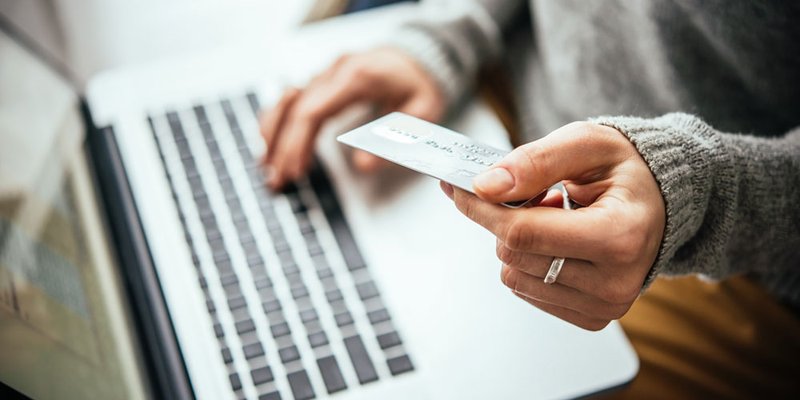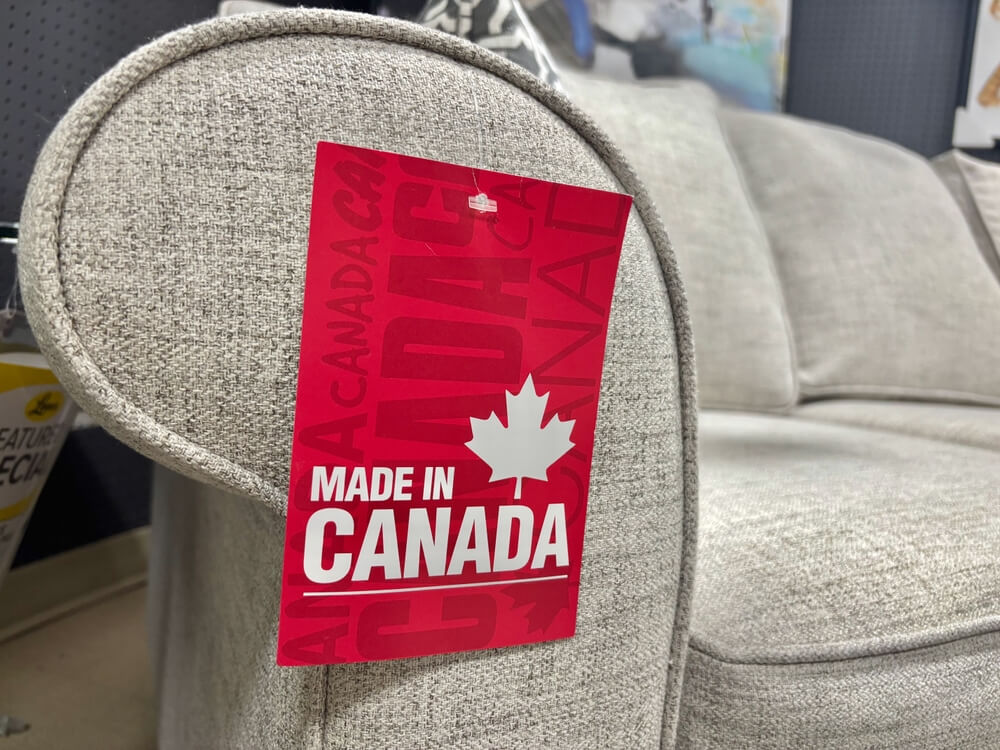
If you are not redirected within 30 seconds, please click here to continue.
Samedi: 10h – 16h HAE

If you are not redirected within 30 seconds, please click here to continue.
If you are not redirected within 30 seconds, please click here to continue.
- Non-delivery scams accounted for $8.7 million in losses last year.
- Depending on the credit card issuer, you may have anywhere from 30 to 60 days to dispute unauthorized transactions.
- By law, your maximum liability for unauthorized transactions on your credit card can’t exceed $50.
Online shopping has become a lifeline for many consumers and retailers during the COVID-19 health crisis, helping meet the demand for everyday essentials. However, more counterfeit goods and scams are infiltrating the marketplace, increasing the risk to buyers and sellers.
According to the Competition Bureau, merchandise and non-delivery scams accounted for $8.7 million in Canadian losses in 2020. Resulting in what the agency describes as “an immeasurable erosion of confidence in the online marketplace.”
Fortunately, most credit cards offer consumer protections and insurance coverage against unauthorized transactions and fraud. Credit card issuers, often banks, recommend trying to resolve issues with merchants before filing a dispute; however, cardholders can request a chargeback if efforts fail.
Compare the best credit cards on RATESDOTCA
Find the best credit card for your lifestyle today!
What is a credit card chargeback?
When a customer makes a purchase using their credit card, a charge appears on their account. A chargeback is a reversal of the transaction. The process is initiated once you file a dispute with the credit card issuer.
The issuer will withhold the funds from the business while they launch an investigation, which typically takes anywhere from 30 to 90 days to complete. The issuer may give the cardholder a provisional refund during that time. The business can also provide supporting documentation against the claim if it believes the dispute is not valid.
How to dispute a transaction
While reviewing your credit card statement, there are a few details to consider before you file a dispute:
- Authorized users. If you have a secondary cardholder on your account, you should ask them if they have made the purchase.
- Foreign merchants. Most credit cards charge foreign transaction fees for making purchases online or abroad in a foreign currency. The exchange rate also applies. If you don’t recognize the amount on the statement, this may be why.
- Business names. Sometimes transactions appear with a different company name or even a code. You may have noticed this when you’ve made a purchase through an app, for example. Compare the charge and date to purchases you’ve made.
- Free trials. Did you sign up for a subscription or streaming service but forget to cancel before the month’s end? These services usually enroll the user into an agreement unless they unsubscribe.
If you determine that the transaction does not coincide with your purchases or the business is unwilling to reach an agreement, it is essential to reach out to your credit card issuer straight away. You can contact the number on the back of your credit card or dispute the transaction via the online portal or app.
Depending on the issuer, you may have anywhere from 30 to 60 days to dispute the transaction.
Transactions you can dispute
Here are a few reasons you may ask for a chargeback:
- The transaction is unauthorized
- The charge was for a different amount
- The charge appears twice
- You have cancelled a service but are still being charged
- You never received the purchase
- The purchase was damaged or not as described
This list can include items that were described as new but turned out to be used or counterfeit.
Transactions you cannot dispute
Sometimes you make purchases you regret — we’ve all had buyer’s remorse. This type of transaction won’t qualify for a chargeback, so all you can do is learn from these mistakes and try not to repeat them.
Here are some other reasons you may not qualify for a chargeback:
- You are dissatisfied with a purchase but have yet to communicate to the seller
- You did not understand the merchant’s delivery, cancellation or return policies
- You filed your dispute after the claim period ended (remember those 30 to 60 days?)
Filing a request
If you have a valid dispute, you’ll want to collect some evidence, whether that is the receipt for the correct amount of an item, a tracking number for a parcel never received, email communications with the merchant; anything that could be of use.
The credit card issuer will launch an investigation. It is important to continue to pay your credit card bill and never miss a payment — you will accrue interest on your balance otherwise. If your dispute is valid, you could see reimbursement as soon as your next statement period.
Liability of cardholders
In Canada, your maximum liability for unauthorized transactions on your credit card cannot exceed $50. However, you must take reasonable steps to protect your personal information in order to qualify.
Immediately notify your credit card company if you suspect your card has been lost or stolen. Never share your personal identification number (PIN) with anyone and choose a combination that is hard to guess. The issuer has a right to investigate the transactions to determine if you contributed to the unauthorized use.
Related read: Are You Exposing Yourself to Credit Card Fraud?
You should find this information in your credit card agreement.
Mastercard Zero Liability Protection
The Zero Liability Protection applies to purchases online, over the phone and in the store. Mastercard also offers Masterpass, a secure digital wallet for making purchases online with a Click to Pay feature.
Visa Zero Liability Policy
Visa has several security features, including the Visa Secure badge on participating sites and the Visa Zero Liability Policy for purchases made in the store, online, by mail and by phone.
American Express Fraud Protection Guarantee
American Express offers Account Alerts to provide up-to-date information about your account balance by email or text message. If you notice any suspicious activity on your statement, contact the number on the back of your card for more information on the Fraud Protection Guarantee.
Third-party payment platforms
Some third-party payment platforms, like PayPal, also offer purchase protection when you use the service.
Large distribution companies, like Amazon, usually handle disputes through their customer service before you ever need to escalate the matter to your credit card issuer.
How to shop online safely
Social media is an excellent tool for legitimate and, unfortunately, illegitimate businesses to advertise their products or services; therefore, it can be challenging to recognize scams — especially when fraudsters can make fake profiles to mimic trusted brands.
Here are a few simple tips to avoid falling victim to fraud:
- Typos and inconsistencies. Check for errors in posts and profiles, including blurry photographs. Sometimes these techniques are used to try and outsmart automated systems designed to detect counterfeit goods.
- Credentials. Many trusted brands have a verified symbol, often a blue checkmark, next to their social media handle. For websites, look for contact details, frequently asked questions (FAQs) and terms of use.
- Return policies. Look for clear store policies and return instructions. Many businesses are waiving the usual return period for items due to COVID-19, but it can help to keep an email copy or a printout of any new conditions.
- Contests and giveaways. If it sounds too good to be true, it often is. People may use fake giveaways as a technique to gain followers or ascertain personal information from contestants. Always look for contest rules and conditions.
- Reviews. Type the company’s name into a search engine and scan for reviews or other feedback. If someone else has been swindled, you’ll likely read about it. Testimonials on the brand’s site can be filtered or fake.
Always keep good records of your purchases, including your receipts, tracking information and communication with merchants. In the event your parcel doesn’t arrive, contact the seller as soon as possible. If you must submit a dispute, you’ll want to report it within the claims period.
Rates, product information, and reward estimates are subject to change at any time and do not constitute financial advice. This post was not sponsored. The views and opinions expressed in this review are purely those of RATESDOTCA. Information in this article is accurate as of the date of this posting, May 21, 2021. Read our full disclaimer.
Get money-saving tips in your inbox.
Stay on top of personal finance tips from our money experts!











